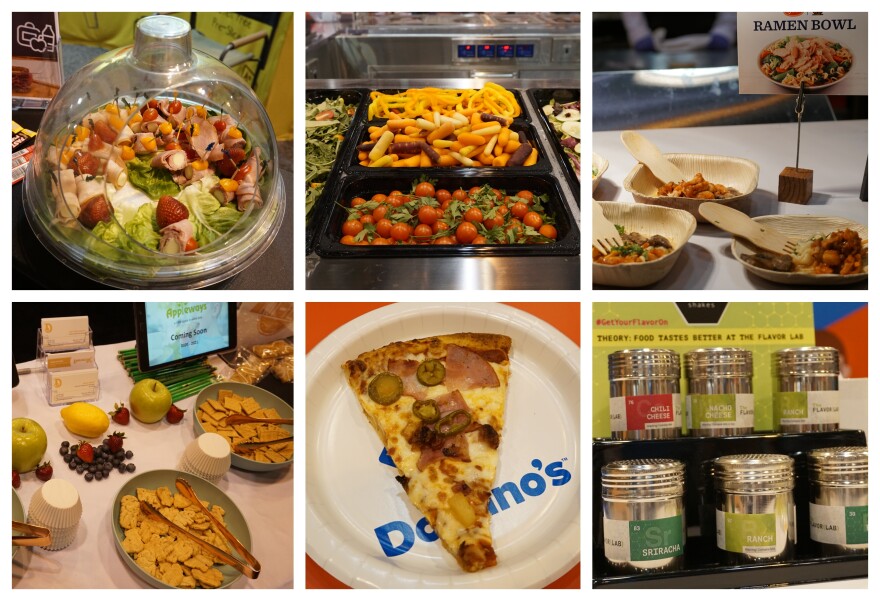About 6,000 nutrition professionals gathered at the America’s Center Convention Complex in St. Louis. They came from all over the country to sample ramen noodle, Parmesan-crusted Alaskan pollock nuggets and low-sodium seasonings that can be used on a variety of meats.
But these foods won’t be served to adults. They’ll be consumed by kids in many of the country’s school cafeterias.
The School Nutrition Association held its annual conference July 14-16. The professionals who attended the conference gathered to preview alternatives and updates to school lunch staples such as chicken nuggets and pizza.
“A lot of students today like a lot of various flavors,” said Reginald Ross, president-elect of the SNA. “You’ll start to see spice stations at a lot of the cafeterias so that they have the options — even if it’s a chicken nugget, if it’s a chicken sandwich — that they can add some spice and flavor that they like to the particular item.”
Tasty and healthy
Spice stations aren’t the only new additions appearing in school cafeterias across the nation. Other options such as calcium-rich coffee bars are showing up in high schools. Whole grain, reduced-sodium pizza is also being served up. But Ross said the goal isn’t just to give students more of the food they love, it’s also to ensure the foods meet the appropriate nutritional standards.
Ross said the SNA is focused on ensuring students remain excited about the healthier options.
“We think it's important that we actually do tastes, so they can see that these products actually taste fantastic and that they’re healthy and nutritious for them at the same time,” Ross said.
Loading...
The food served to students as a part of the National School Lunch Program has to meet specific federal guidelines. Some of those standards include making sure grain products are at least 51% whole grain and that the food served doesn’t include added trans fats.
Choice, cost and waste
The U.S.D.A. introduced new, flexible guidelines for school nutrition in 2018. One reason was to help schools combat waste.
Ross said creative, on-trend menu offerings can solve that problem.
“As long as we give students the options on what they get to select, I think in that case, it reduces the amount of food waste,” Ross said.

But cost is also an important factor. Ross said that means some of these newer food options might not be served every day to balance out overall costs.
“Sometimes it’s just a balancing act just like you would do at home,” said Katie Gegg, director of School Food and Nutrition Services for the Mehlville School District. “I might have a heavier-cost item in a week, but I don’t do that every day.”
Gegg said her focus is to ensure students in the Mehlville School District get to try some of the foods they eat outside of school, integrated into school lunch menus. And that means incorporating self-serve options like bringing more food bars into the district.
“They eat with their eyes, whether it’s the food itself or what they’re putting it in, or they’re serving it in the line that they have it displayed in,” Gegg said. “So I think it’s all encompassing. If it’s a nice, inviting space, your food looks good, it’s served in something good looking, I’d want to eat there.”
The conference comes at a time when the number of students eating school lunches has decreased. Data from the USDA show that participation in the National School Lunch Program reached a 13-year low in 2018, with about 30 million students receiving reduced-cost or free lunches. That’s down by about 2 million from 2011. Experts say shorter school lunch periods are contributing to the decline.
“To have well-educated students, we need to be able to provide them healthy meals,” said Gay Anderson, president of the SNA. “We’re running into shorter lunch periods, so kids don’t have time to eat, and we need to make sure that kids have that aspect there.”
Reporter Nicolas Telep contributed to this story.
Follow Chad on Twitter @iamcdavis.
Send questions and comments about this story to feedback@stlpublicradio.org.



